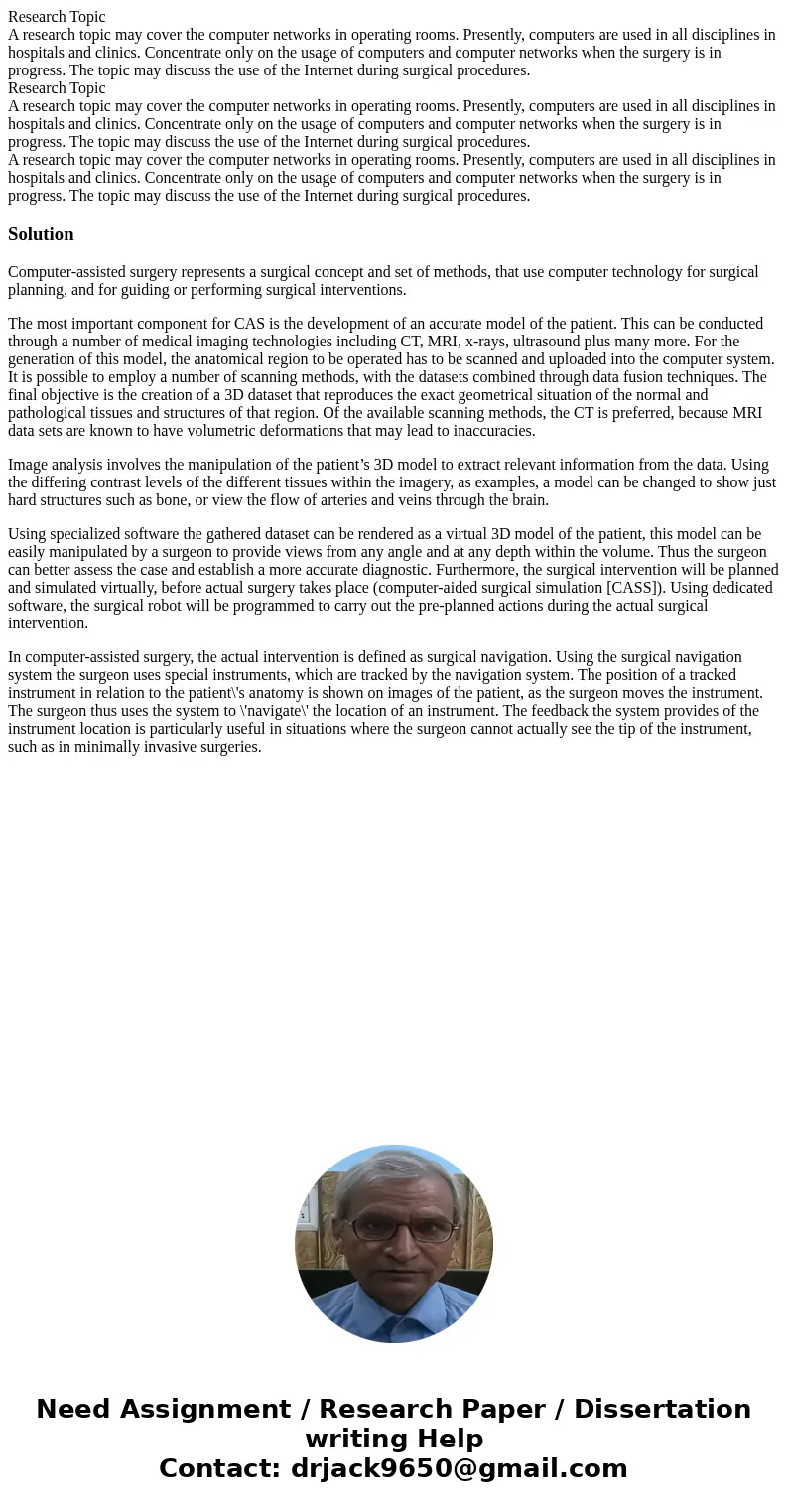Research Topic A research topic may cover the computer netwo
Solution
Computer-assisted surgery represents a surgical concept and set of methods, that use computer technology for surgical planning, and for guiding or performing surgical interventions.
The most important component for CAS is the development of an accurate model of the patient. This can be conducted through a number of medical imaging technologies including CT, MRI, x-rays, ultrasound plus many more. For the generation of this model, the anatomical region to be operated has to be scanned and uploaded into the computer system. It is possible to employ a number of scanning methods, with the datasets combined through data fusion techniques. The final objective is the creation of a 3D dataset that reproduces the exact geometrical situation of the normal and pathological tissues and structures of that region. Of the available scanning methods, the CT is preferred, because MRI data sets are known to have volumetric deformations that may lead to inaccuracies.
Image analysis involves the manipulation of the patient’s 3D model to extract relevant information from the data. Using the differing contrast levels of the different tissues within the imagery, as examples, a model can be changed to show just hard structures such as bone, or view the flow of arteries and veins through the brain.
Using specialized software the gathered dataset can be rendered as a virtual 3D model of the patient, this model can be easily manipulated by a surgeon to provide views from any angle and at any depth within the volume. Thus the surgeon can better assess the case and establish a more accurate diagnostic. Furthermore, the surgical intervention will be planned and simulated virtually, before actual surgery takes place (computer-aided surgical simulation [CASS]). Using dedicated software, the surgical robot will be programmed to carry out the pre-planned actions during the actual surgical intervention.
In computer-assisted surgery, the actual intervention is defined as surgical navigation. Using the surgical navigation system the surgeon uses special instruments, which are tracked by the navigation system. The position of a tracked instrument in relation to the patient\'s anatomy is shown on images of the patient, as the surgeon moves the instrument. The surgeon thus uses the system to \'navigate\' the location of an instrument. The feedback the system provides of the instrument location is particularly useful in situations where the surgeon cannot actually see the tip of the instrument, such as in minimally invasive surgeries.

 Homework Sourse
Homework Sourse